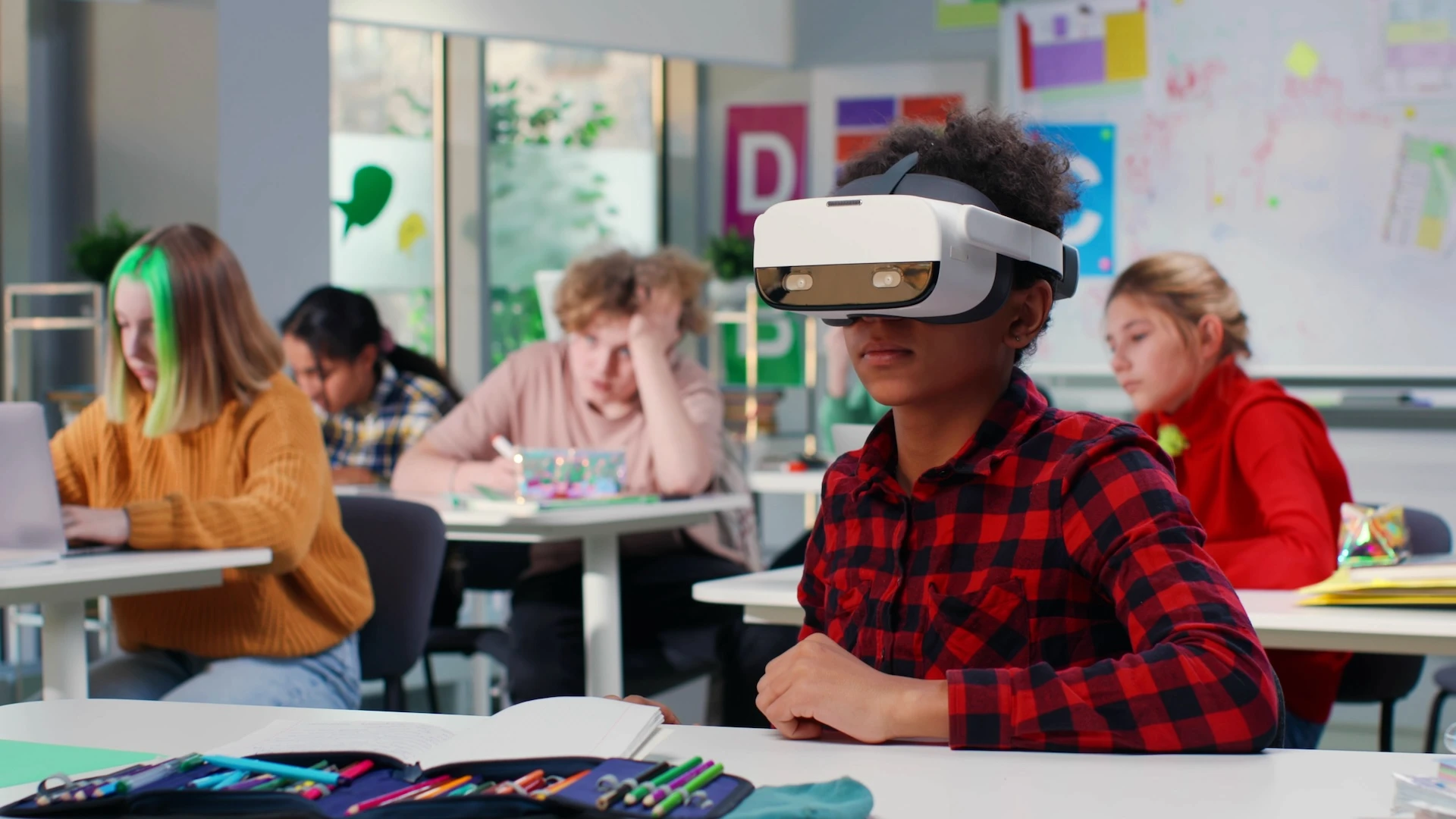& Construction

Integrated BIM tools, including Revit, AutoCAD, and Civil 3D
& Manufacturing

Professional CAD/CAM tools built on Inventor and AutoCAD
Society has spent much of the late 20th century and early 21st century making hard-won legal and cultural gains around inclusivity. As a result, discrimination based on gender, race, sexuality, and religion is—while not completely eradicated from the world of work—isolated and underground.
But there’s another type of othering that’s barely known, let alone acknowledged: the experiences of neurodivergent individuals in environments primarily created by—and catering to—neurotypical people.
Maybe it’s an employee distracted by a flickering light or needing safer frameworks in order to speak up during meetings. “You could have an employee in an open office environment who is bothered by the constant noise around them,” says Philipp Wolf, engineer, former entertainment industry visual effects (VFX) executive, and swyvl CEO. “They ask their employer if they can wear headphones. But because there’s a no headphones policy, they’re told they’re not allowed to.”
Some might assume the worker bothered by the light, noise, or the intensity of voicing ideas in front of peers is entitled or spoiled. Wolf himself has been accused of arrogance and rudeness for not looking at people while they speak to him.
But, like him, those other people might simply be neurodivergent. Where Wolf, for example, has trouble following the social norm of looking people in the eye, others might have difficulty concentrating around flickering lights or office noise.
Rather than dismissing the concerns of neurodivergent people, making accommodations can improve the workplace for everyone. Consider wheelchair-accessible buildings. “It not only helps wheelchair users but also the person carrying something heavy or the person using a stroller,” Wolf says.
Recognizing and accommodating neurodivergent workers could make a big difference in an organization’s bottom line. The Scottish government found in a 2018 report that overlooking neurodiversity inclusion could cost 2.2 billion pounds ($2.8 billion) annually—42% of that in lost productivity. In extrapolating that figure across the global economy, swyvl estimates the worldwide economic cost in lost productivity to be up to $194 trillion annually.
How? Wolf again uses himself as an example. His mentality makes it almost unbearable to sit with his back facing an open room. If he’s required to do so, it occupies 30%–40% of his mental energy—a burden that often contributes to neurodivergent people being seen as less effective. “Efficiency and productivity from people like me go way down in situations that don’t support neurodiversity,” he says. Inclusive workspace design can alleviate this and help neurodivergent employees’ full potential to flower.
These challenges led Wolf and his colleagues to create swyvl, an extended reality (XR) educational platform to foster empathy in users by letting them experience the world through neurodivergent perspectives.
The linchpin of swyvl will be short pieces of content the user consumes through a web interface or virtual reality (VR) headset. These scenarios depict everyday slices of life (for example, attending school, going to the gym, or performing household chores), presenting the visual, audio, and sensory experience of the environment and activity as a neurodivergent person might experience them.
Scenarios will be accompanied by a series of professionally made, industry-specific seminars, all designed in consultation with a behavioral scientist. “It’s an educational tool,” Wolf says. “It will help people learn about different lived experiences, creating empathy and, hopefully, helping close the gap around neurodiversity understanding and misperceptions.”
The plan is to host more and more scenarios to help people appreciate what the world’s like for the neurodivergent. Parents of an autistic child can experience what it’s like for their child on the playground during recess. Office managers can see exactly why they may need to change the lighting or give someone with heightened noise sensitivity a quieter workspace.
Wolf and his co-founders, Katie Mitchell and Drea Letamendi, PhD, see a broad range of uses for swyvl in the community and business. As well as letting families, schools, and neurodivergent people themselves experience and contextualize how they see the world, it can help organizations design better workplaces, teach health-care staff how different people might respond to treatments, and even train law enforcement and courts on dealing with the neurodiverse public.
Accessibility is key, so while Wolf and his partners are negotiating directly with VR hardware makers to enable swyvl as a proprietary app on devices such as the Meta Quest, Apple Vision Pro, Samsung VR, and HTC Vive, it’s also designed to work on laptops, mobile devices, or TVs.
To allow for even more immersion, they’re going further than most software companies by expanding into hardware. Technologies that deepen the experience of augmented reality (AR) or VR into XR include EEGs that record brain activity and haptic wearable devices that simulate and match activity inside the experience—for example, if you grab an XR apple, you can feel the pressure and form of it in your hand thanks to a haptic glove.
It’s an area the team wants to explore because it has been a central part of Katie Mitchell’s immersive experience created as part of her university master’s thesis, but—still with an eye on accessibility—Wolf expects such hardware to be more suited to enterprise and mental health training and educational users, rather than the general public.
Although hardware may enhance the experience for some, swyvl’s secret sauce will be the scenarios, clips, and films of various lengths that show users firsthand what it’s like being a neurodivergent person interacting with the world. The cinematic nature of this content is thanks to Wolf’s background, as well.
His previous career was in entertainment VFX, so he knows the challenges and opportunities around XR content, both from a creative lens and from a productivity perspective of asset management, workflow pipelines, and delivery mechanisms.
The team is using AutodeskFlow Production Tracking for management, planning shoots, and scheduling teams and workflows. Scenarios will be shot in 360-degree stereo at a very high quality. Postproduction work and editing to make the visuals and sounds more true-to-life based on neuroscience and behavioral research will be done in Autodesk Maya.
“We can get the information out of the image from the representation of 3D space, easily selecting individual objects or elements,” he says. “For example, we might take a flickering fluorescent lamp on the ceiling. If it’s in 3D space as a point cloud, we can use Maya to make it a 3D model, which we can then distort, like making the light bigger or brighter or the flickering faster.”
The last piece of the software puzzle is Autodesk Fusion, which is being used to conceptualize and develop hardware such as swyvl’s haptic vest design.
One of the most exciting elements of swyvl will be private, user-generated content, where neurodivergent people, their parents, or loved ones film their own home, school, workplace, or other environment and present it from their own perspective, giving perhaps the most authentic accounts of neurodivergent people’s lives.
And because not everyone is a professional filmmaker or editor, artificial intelligence (AI) will be a crucial tool for user-generated content. “We can’t talk about true immersion without acknowledging that everyone’s experience is different,” Wolf says. “AI tools will let users create their own scenarios with full control over privacy. It will be as easy as following a few instructions on their mobile device, recording a video, and having the AI tools create a bespoke immersive scenario.”
The scenario library will constantly grow, giving developers and licensees more content to evaluate and design living and urban spaces, video game or entertainment content, and more to expand understanding about neurodivergent accessibility.
The planned business model for swyvl is a multitiered product offering. Wolf wants swyvl content to be as free as possible for the general public. “We can’t promote accessibility and not be accessible ourselves,” he says.
Another level of service might be for an organization or office seeking regular training and certification on neurodiversity, similar to company-wide security training in finance workplaces or mandated hygiene training in hospitality venues. When a yearly refresher is due, swyvl will let licensees select from industry- or domain-specific examples attached to relevant seminar content.
But one of the most important business targets is mental health providers. Wolf envisions psychologists or psychiatrists having a license to use and monetize swyvl content in their practices and to offer certification training.
While in the prefunding stage, a recent grant will allow swyvl to build a prototype over the next few months. The aim from there is to launch with 10 initial scenarios later in 2024. According to company literature, seven companies featured on the Forbes 1,000 have already expressed interest.
The company anticipates a vast business opportunity. More important, however, swyvl sees a major opportunity to destigmatize mental health and enable neurodivergent people to bring their best to companies, the economy, and the world unimpeded.
Such a shift would be good for everyone. As Wolf says, “If you look in the past, some of the greatest thinkers who’ve changed our world, like Albert Einstein and Nikola Tesla, were very likely neurodivergent people.”
After growing up knowing he wanted to change the world, Drew Turney realized it was easier to write about other people changing it instead. He writes about technology, cinema, science, books, and more.
Executive insights
Executive insights
Emerging Tech









